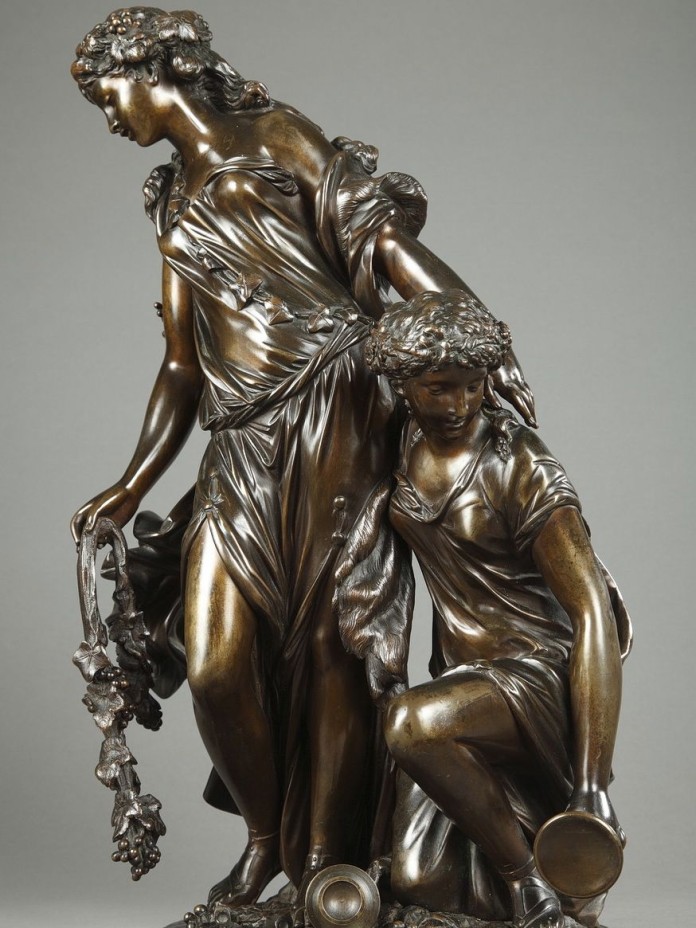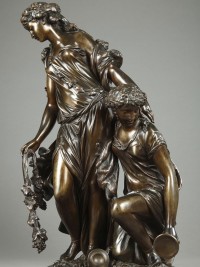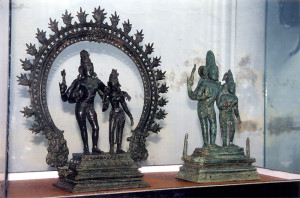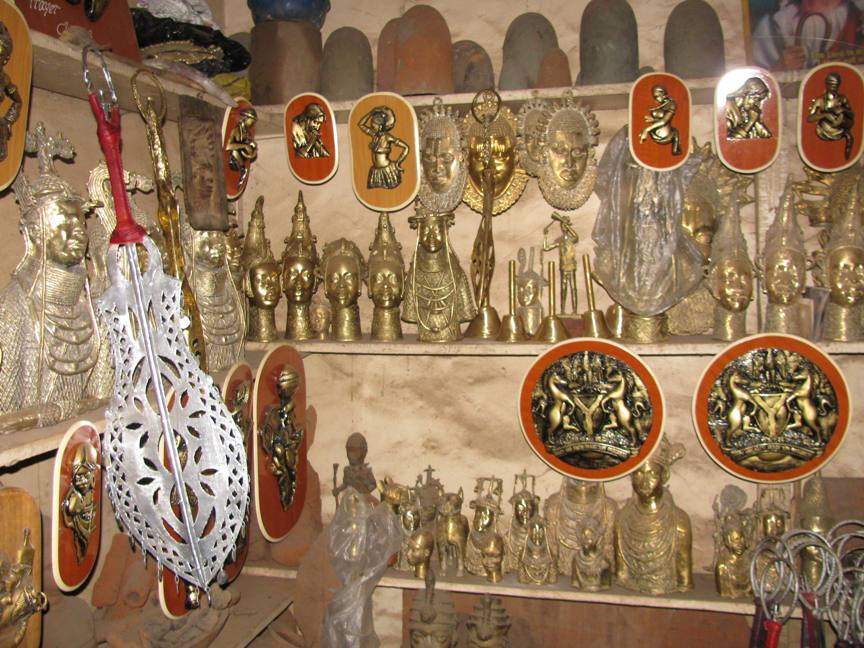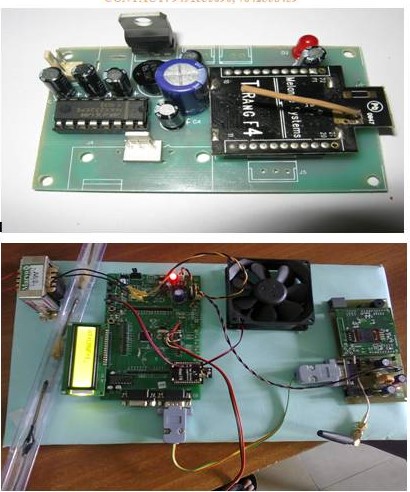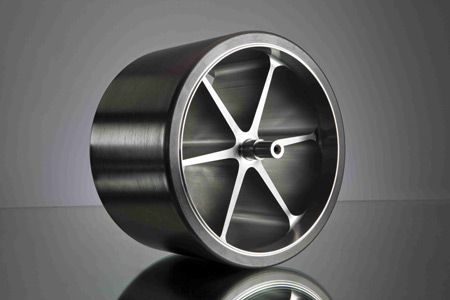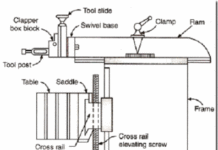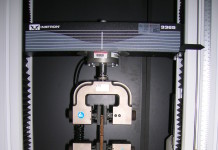Bronzes
Bronze has higher strength, better corrosion resistance than brasses. It is comparatively hard and resists surface wear and can be shaped or rolled into wire, rods and sheets very easily. It has antifriction or bearing properties. Bronze is costlier than brass. The tensile strength of bronze increases gradually with the amount of tin, reaching a maximum when tin is about 20%. However the percentage of tin content if increases beyond this amount, the tensile strength decreases very rapidly. Bronze is most ductile when it contains about 5% of tin. As the amount of tin increases about 5%, the ductility gradually decreases and practically disappears with about 20% of tin. Whereas presence of zinc in the bronze increases fluidity of molten metal, strength and ductility.
Some of the common types of bronzes are discussed as under:
1 Phosphor Bronze
When bronze contains phosphorus in very small amount, then phosphor bronze is produced.
A common type of phosphor bronze has the following composition.
Cu = 89 to 94%
Sn = 6 to 10%
P = 0.1 to 0.3%
Properties
Tensile strength, ductility, elasticity, soundness of castings, good wearing quality and resistance to fatigue of phosphor bronze increases with increase of phosphorus in bronze. This material possesses good corrosion resistance especially for sea water, so that it is much used for propeller blades. Phosphor bronze of proper composition can be easily casted, forged, drawn, and cold rolled.
Applications
Phosphorus bronze is used making for bolts, electric contact springs, bearings, bushes, gears, ship sheathing, valve parts, propeller blades, worm wheels, gears, nuts for machine lead screws, pump parts, linings and for many other purposes. It is also suitable for making springs and corrosion resistance mine cables.
2 Silicon bronze
Silicon bronze contains
Cu = 96%
Si = 3%
Mn or Zn = 1%
Silicon bronze has good general corrosion resistance of copper combined with higher strength. It can be cast, rolled, stamped, forged and pressed either hot or cold and it can be welded by all the usual methods.
Applications
Silicon bronze is widely used for making boilers, tanks, stoves or where high strength and good corrosion resistance is required. It is used also for making screws, tubing’s, pumps etc.
3 Beryllium bronze
Beryllium bronze is a copper base alloy contains
Cu = 97.5%
Br = 2.5%
Beryllium bronze possesses higher tensile strength than other bronzes. It possesses excellent corrosion resistance. It is having high yield point and high fatigue limit. It is having good hot and cold resistance. This can be heat treated by precipitation hardening. It possesses excellent formability in soft condition, and high fatigue and creep resistance in hardened condition. However it involves high cost.
Applications
Beryllium bronze is particularly suitable material for making springs, tubes, diaphragms and electrical contacts, heavy duty electrical switches, cams and bushings. This is used for springs, heavy duty electrical switches, cams and bushings. Having non-sparking characteristics, it is used for making chisels and hammers using for such conditions where spark might cause explosion. It has a film forming and a soft lubricating property, which makes it more suitable as a bearing metal. Since the wear resistance of beryllium copper is five times that of phosphorous bronze, therefore it is used as a bearing metal in place of phosphor bronze.
4 Manganese bronze
Manganese bronze is an alloy of copper, zinc and little percentage of manganese. The usual composition of this bronze is
Copper = 60%
Zinc = 35%
Manganese = 5%
Manganese bronze is highly resistant to corrosion. It is stronger and harder than phosphor bronze.
Applications
Manganese bronze is mainly used for bushes, plungers, feed pumps, rods etc. Worm gears are frequently made from this bronze.
5 Aluminium Bronze
Aluminium bronze possesses
Cu = 85 to 88%
Al = 8 to 11%
Fe = 3%
Sn = 0.5%
Properties
The aluminium bronze with 8% aluminium possesses very good cold working properties. When iron is added to this metal, its mechanical properties are greatly improved by refining the grain size and improving the ductility. The maximum tensile strength of this alloy is 450 MPa with 11 % aluminium. This material possesses good resistance to corrosion and it is somewhat difficult to cast due to oxidation problem.
Applications
Aluminium bronze is generally used for making fluid connection fittings, gears, propellers, air pumps, bushings, tubes, slide and valves etc. Cams and rollers are commonly produced using this alloy.
6 Bell Metal
Bell metal generally contains
Cu = 66.7%
Sn = 33.3%
Bell metal is very strong. It possesses resistance to corrosion water and atmosphere. It is used to make bells.
Reference Introduction to basic Manufacturing Processes and Workshop Technology by Rajender Singh.
For engineering project visit this page regularly for know more things related project ideas. Click here to see Ideas of Projects. Engineers Gallery. All the Best!

